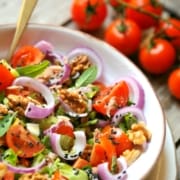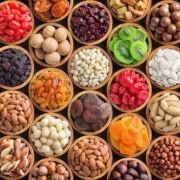Review of EU Novel Food submissions and US GRAS Petitions to identify opportunities for use of New Approach Methodologies for safety determinations of food substances
The IAFNS Food and Chemical Safety Committee is pleased to announce it is accepting applications for the above project. The risk assessment of some food substances have been shifting to adoption of a high-throughput, non-animal method strategy for demonstrating safety. These methods, along with new in vitro, in silico and powerful computer modeling tools, are collectively referred to as New Approach Methodologies or NAMs. This proposal seeks to review available safety assessments of food substances to identify classes of food substances that have leveraged NAMs data to support a regulatory approval. This would include a review of safety determinations by the U.S. Food & Drug Administration in its publicly available GRAS database, as well as those from the European Food Safety Authority.
Due date and address information: Proposals are due Oct. 10, 2023. The full Request for Proposals is available here.
Responses can be sent to IAFNS Senior Science Program Manager Neal Saab, PhD, at nsaab@IAFNS.org
Development of Nonpolar Liquid Antimicrobial Delivery Systems for Dry Sanitation
A sanitation program is a key component of a food processing facility’s food safety program and is a regulatory requirement for both FDA and USDA regulated products. Many sanitation programs utilize water and aqueous based sanitizers to control environmental pathogens. However, the introduction of water into facilities that manufacture low water activity, ready-to-eat foods could increase the potential for pathogen outgrowth and compromise the safety of the product. Instead, production of low-moisture foods (LMF) should utilize dry sanitation procedures to prevent pathogen contamination.
Pathogen control in the production of low water activity foods is difficult to accomplish with current dry sanitation products. Ethanol and isopropanol are commonly used sanitizers since they evaporate and leave no residue. However, they are highly flammable. Therefore, the use of these alcohol-based sanitizers requires the processing equipment to cool down prior to use, reducing the frequency of cleaning given the labor and time cost for processors.
As an alternative to alcohol-based sanitizers, organic acids in combination with non-polar liquids could be a viable option. Organic acids are commonly used as food additives or antimicrobials treatments to prevent the growth of pathogens. In hydrophobic environments, the antimicrobial activity of the organic acid can be increased due to a shift to a non-dissociated form. Therefore, utilizing non-polar liquids as a delivery agent for antimicrobial organic acids could be an effective sanitation strategy for dry processing environments.
This newly funded project aims to develop and validate non-polar liquid sanitizing formulations for food processing environment cleaning applications. This provides an alternative sanitizing tool that decreases the hazards associated with traditionally used alcohol-based sanitizers while increasing the frequency of sanitation and ultimately improving the safety of foods processed in dry environments.
Institution: University of Massachusetts, Amherst
Principal Investigator: Lynne McLandsborough, PhD
Year Awarded: 2023
Learn more about the IAFNS Food Microbiology Committee


